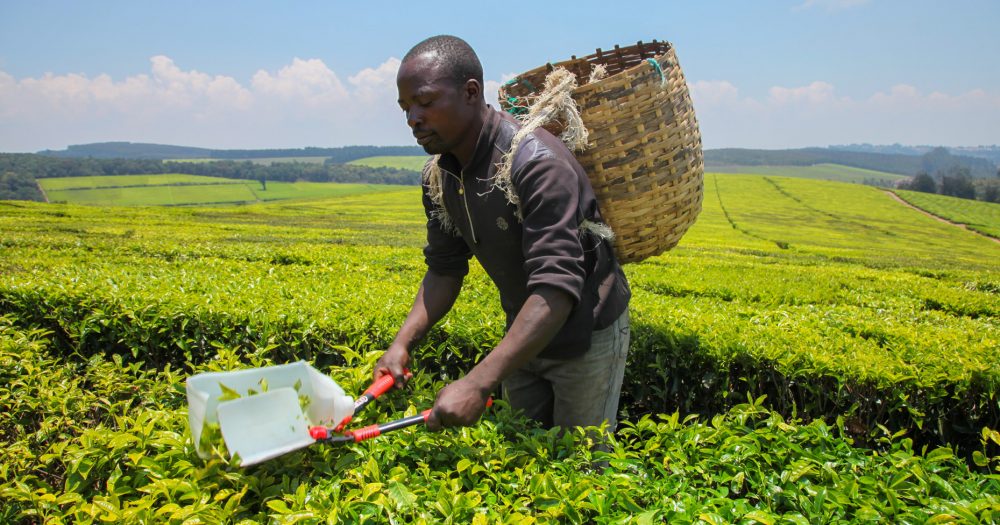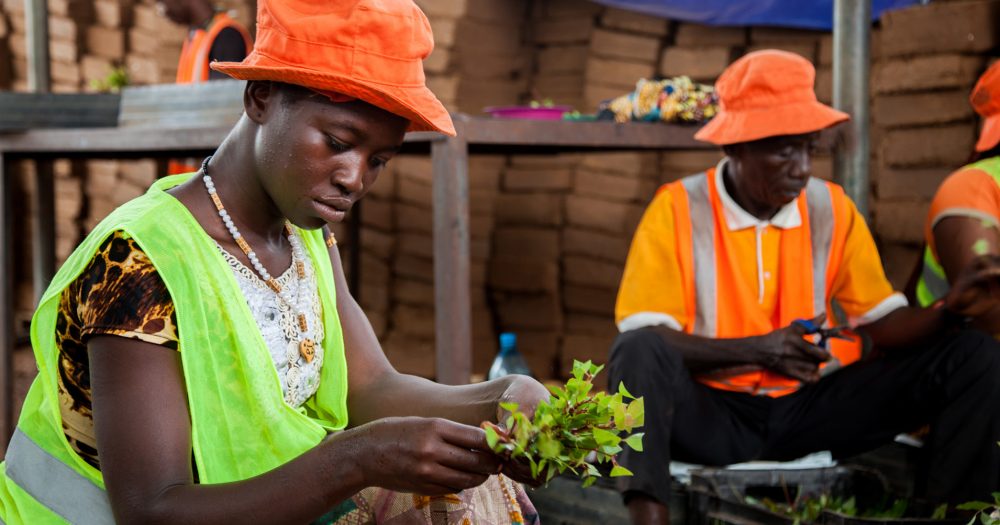Our investment
Description of the investment.
Description of the investment.
BII announced its anchor commitment of $15 million equivalent in Tanzanian Shilling to NMB Bank’s (NMB) inaugural sustainability bond offering, known as the NMB Jamii Bond. The proceeds from the bond will finance social and climate projects that contribute to inclusive socioeconomic growth and strengthen the response to climate change.
Impact information
Applies to investments made from 2019 onwards. The tabs in this section define what we expect to achieve through the investment, assessing the potential impact of the investment against six dimensions of impact. You can find more details on our methodology of assessing impact here.
Applies to investments made from 2019 onwards. The tabs in this section define what we expect to achieve through the investment, assessing the potential impact of the investment against six dimensions of impact. You can find more details on our methodology of assessing impact here.
What?
| Impact |
|---|
Strengthen the capacity of domestic financial institutions to improve and expand access of financial services (SDG 8.10) Improve access to basic goods and services and provide access to economic opportunities for individuals, particularly women (SDG 1.4, 5a, 8.5) Increase access to renewable energy and reduce GHG emissions by providing access to finance for green projects (SDG 13a) |
|
|
How?
| Primary | Secondary |
|---|---|
|
Catalysing markets (demonstration): The success of this bond issuance will demonstrate that the market, country, and instrument risk is lower than what it is perceived to be. This can provide an example for institutional investors and for other FIs in lesser-established bond markets in Africa to encourage future issuances. |
Direct: Providing capital to socioeconomic businesses to improve access to basic goods and services and provide access to economic opportunities Economic enabler: Providing capital to climate related businesses to improve access to clean energy and reduce GHG emissions. |
Who?
| Stakeholder | Geography | Characteristics |
|---|---|---|
| Variable depending on the company issuing the bond and the use of proceeds |
Tanzania |
In addition to the bank, subscribers to the bond (retail and institutional) are likely to benefit from this issuance. Ultimate impact on end stakeholders is not visible given the long impact chain. |
| Customers and employees |
Tanzania |
Variable depending on the projects financed (scope included in the sustainability bond framework e.g., green transport, renewables, affordable housing, food security); however, we have limited visibility on the pipeline. |
| Planet |
Global |
How much?
| Scale | Depth/Duration |
|---|---|
|
Limited visibility on scale; however, the size of the bond issuance can be used as a proxy |
3-years |
Contribution/additionality
| Contribution/additionality |
|---|
|
BII’s contribution is considered to be medium given a lack of sufficient capital in the market at the capital markets and issuer levels. The projects are likely to be safer and may include a refinancing element, so the financial additionality at the project level will vary based on the context. We expect our role as anchor investor to contribute to the mobilisation of institutional commercial (non-DFI) capital. Opportunities for value additionality are in ESG and climate project verification. |
Risk
Execution RiskUnsuccessful issuance due to limited investor appetite, pricing constraints or other execution issues especially given that there have been no sustainability bonds issued on the DSE and a limited institutional investor base. Alignment RiskThe sustainability bond framework lays out the potential use of proceeds, which is key to the direct impact of the transaction; however, it is possible that the bank is unable to use the proceeds in line with those requirements. Evidence RiskRisk the ultimate impact of the transaction cannot be verified given the lack of capacity and long impact chain |
Impact score
|
Impact score (at point of investment)
The Impact Score is a tool to help us manage our performance against our strategic impact objectives. It is designed to incentivise investments that support our productive, sustainable, and inclusive objectives. You can find out more here. The Impact Score is published for investments made from 2022 onwards. The Impact Scores are calculated at the point of investment. We publish the Impact Scores of new investments annually, once the information has been externally assured by an independent third party. |
|---|
10 |
Environmental and social information
-
Environmental and social summary
A high-level description of the environmental and social aspects of the investment. This may include a summary of key environmental and social risks identified during environmental and social due diligence (ESDD); key elements of an environmental and social action plan (ESAP); or ways in which we plan to support the investee improve environmental and social standards, such as through their environmental and social management system (ESMS); as well as any other priority areas agreed with the investee.
-
Environmental and social risk
A risk category rating, which indicates the level of environmental and social risk associated with an investment. For an explanation of the categorisations used, see here. We consistently provide an environmental and social risk category for all investments screened from 2023 onwards.
Environmental and social summary
BII agreed an ESAP with NMB Bank focused on enhancing the Bank’s E&S Management System (ESMS) and its implementation. NMB Bank will also update its HR policies and procedures to align with the applicable performance standards and safeguarding requirements.
Environmental and social risk
High
Reporting and Complaints Mechanism
The Reporting and Complaints Mechanism allows anyone outside BII to report alleged breaches of the business integrity or environmental and social provisions of BII’s Policy on Responsible Investing. This includes breaches made by BII, a BII investee, or a portfolio company of a fund in which BII has invested. The Reporting and Complaints Mechanism Rules are available here. Reports and complaints can be submitted by email to reportsandcomplaints@bii.co.uk or by mail. See more details on our Reporting and Complaints Mechanism here.
For any other general enquiries contact us at enquiries@bii.co.uk
-
Key facts
- First published
:
When the investment was first published on the website database.
- January 2024
- Last updated
:
When the last quarterly update of the website database occurred.
- March 2025
- Project number
:
An identifier number shared by investments in the same project.
- D6101
- Status
:
The current status of the investment (green flag for active and red flag for exited).
- Active
- Region
:
The geographical region where the country is located. We currently invest in Africa, South Asia, South East Asia and the Caribbean. In 2023, BII’s investment mandate was extended allowing it to invest in regional funds linked to Ukraine, with the majority of activity expected to begin post-war. Investments outside these regions were made prior to 2012 under previous investment mandates.
- East Africa
- Country
:
The countries where the investment delivers impact. Where impact is delivered in multiple countries, this is indicated.
- Tanzania
- Sector
:
We prioritise those sectors that facilitate development and need our capital the most. Our priority sectors contribute towards many of the Sustainable Development Goals. They range from investing in the power infrastructure that will provide people with better access to electricity, to investing in financial institutions that direct capital to the individuals and businesses that need it the most.
- Financial services
- Sub sector
:
The sub-sector that the investment is made into; this provides a more granular level of detail than the ‘sector’ information
- Banks
- Investment type :
- Debt
- Start date :
- September 2023
- Amount :
- $15m
- Currency of investment :
- TZS
- Domicile
:
The company or investment fund’s place of incorporation.
- Tanzania
We provide capital in the following ways: directly – through direct equity, direct debt, guarantees and other non-intermediated financial instruments; and indirectly – principally through investment funds.
For direct investments and fund investments, this is the date BII committed capital to the investments. This is typically the date on which legal agreements are signed by all parties.
For the portfolio companies of our fund investments, this is the date (either the month or the quarter) on which the fund committed capital to the portfolio company.
For direct equity investments, this is the date at which British International Investment exited the investment.
For debt investments, this is the date at which the final debt repayment was made.
For funds, this is the date at which the fund was terminated.
For underlying fund investments, this is the date at which the fund manager exited the investment.
The total amount committed, per financial instrument, per investment, on the date BII becomes subject to a binding legal obligation to provide funding or assume a contingent liability. This information is provided in US dollars.
For direct investments, this is the amount that BII has committed to the business or project. For fund investments, this is the amount BII has committed to the fund.
The currency in which the investment was made.
- Climate finance
:
Indicates whether the investment is climate finance qualified or partially climate finance qualified and the type of climate finance (adaptation, mitigation or both). We define climate finance using the multilateral development bank (MDB) and the International Development Finance Club (IDFC) Common Principles climate finance methodology. See Common Principles for Climate Mitigation Finance Tracking and Common Principles for Climate Change Adaptation Finance Tracking. We provide the climate finance qualification and type for commitments from 2020 onwards, which is when we launched our Climate Change Strategy.
- Partially qualified
- Climate finance type
:
Mitigation: Indicates investments which, by avoiding or reducing GHG emissions or increasing GHG sequestration, contributes substantially to the stabilisation of GHG concentrations in the atmosphere – at a level which prevents dangerous anthropogenic interference with the climate system consistent with the long-term temperature goal of the Paris Agreement
Adaptation: Indicates investments aimed at preventing or reducing the risks or vulnerabilities posed by climate change and increasing climate resilience. This includes both adapted activities and enabling activities to manage and reduce physical climate risks
Dual: Indicates investments directed towards activities contributing to both climate change mitigation and climate change adaptation and meeting the respective criteria for each category
The climate finance type of the investment is determined at time of commitment.
-
- Mitigation
- 2X Gender Finance
:
Indicates whether the investment is ‘2X qualified’ using the 2X Challenge criteria. You can find out more here. It only applies to investments made from 2018 onwards, when the 2X Challenge was first launched.
- Partially qualified
- First published


